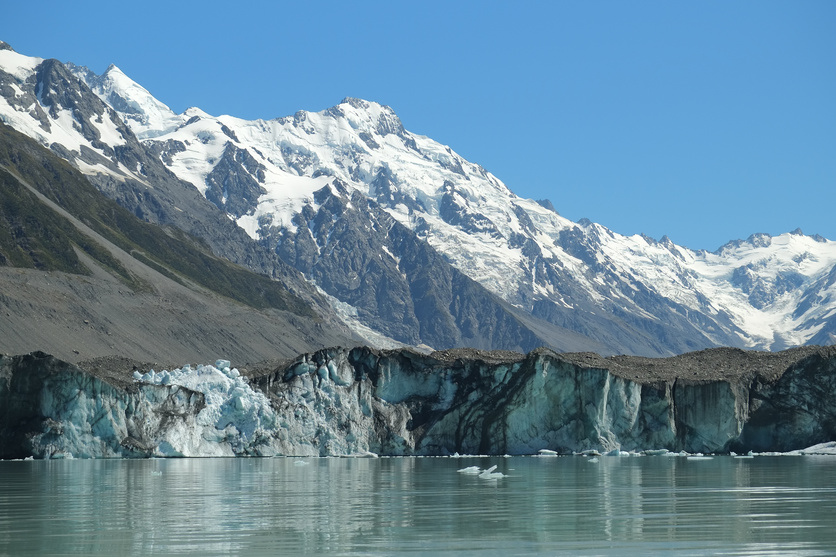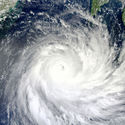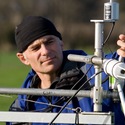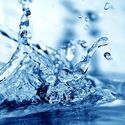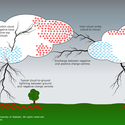Glaciers are getting smaller in most parts of the world – and at the fastest rates since record keeping began.
Glaciers explained
A glacier is a body of ice formed from snow that has accumulated and been compacted over a long period of time. They form in mountainous areas and high latitudes where snow remains year round, accumulating and transforming to ice. Each glacier has an equilibrium1 line – the altitude2 at which snowfall is equal to snowmelt in a given year. The equilibrium line varies with changes in climate3, especially temperature4 and precipitation5.
Glacier locations
Although glaciers are most commonly associated with polar regions, they are found on every continent6 except Australia. There are tropical glaciers in Mexico and New Guinea – places more often associated with burning heat7 rather than large ice masses – and in the high mountains of the Andes and East Africa.
Glaciers in the middle latitudes are found in mountain ranges such as the Pyrenees and Alps in Europe, the Himalayas in Asia, the Rocky Mountains in North America and the Andes in South America. In New Zealand, there are small glaciers on Mt Ruapehu while the South Island has glaciers stretching from Nelson to Fiordland.
Glaciers and climate change research
Professor Lonnie Thompson, from Ohio State University in America, has spent more than 30 years researching glacial8 ice in the tropical and middle latitudes. Over that time, he has noticed changes to ice area and thickness, and his team has been mapping the extent of these glacial retreats9. Lonnie says that, in the lower latitudes (closer to the equator), 100% of glaciers are receding, and in many places, this is happening more and more quickly.
Nature of science
Professor Lonnie Thompson has documented and mapped glaciers for several decades. He uses this information as evidence10 to build and support theories about climate change11. His data12 must be available for peer review13 and feedback from others in the scientific community14.
Learn more about glaciers and climate change15 research in Glaciers and Glaciers provide global climate puzzle. The animated video Snow to ice shows how snow on the ground is rounded and compacted, sealing off pores between the grains and trapping atmospheric gases16.
Changes to New Zealand’s glaciers
New Zealand has over 3,100 known glaciers – 18 are on Mt Ruapehu with the rest in the South Island. Some of the steep mountain glaciers – like the Franz Josef and Fox Glaciers – are very sensitive to annual variations in temperature and snowfall. Their locations in steep, narrow valleys funnel ice down to the terminus (the end) of the glacier within a 5 to 10-year span. Franz Josef Glacier has had numerous periods of advancing and receding, but since 2008, it has been receding rapidly.
New Zealand also has long, low-gradient glaciers – their slope is not so steep. An example is the Tasman Glacier, New Zealand’s largest glacier. These types of glaciers can take decades to react to changes in climate. Several metres17 of rocky debris insulate these glaciers, slowing surface melt and terminus retreat. However, even these big glaciers have also had significant changes in ice volume18 over the past few decades.
The National Institute of Water and Atmospheric Research (NIWA) uses aerial surveys19 to monitor the South Island glaciers. Annual surveys from the last 40 years show periods of glacier advance and mass gain – but overall, New Zealand glaciers are retreating and losing mass. Recent work by New Zealand glaciologists explains that these periods of glacial advance and retreat are primarily driven by changes in temperature associated with regional-scale climate variability.
From the 1970s to the 1990s, small glacial lakes began to form at the terminus of the big glaciers. These lakes increase ice loss as ice at the front of the glacier calves (breaks off) into them. Many glaciers – such as the Tasman and Murchison Glaciers – are losing ice as their lakes grow.
Unfortunately, high snowfall rates on the South Island’s west coast will not buffer ice loss due to expected increases in temperature. New Zealand is likely to lose much of its glacier ice in the next 100 years or so. Preliminary modelling suggests that 50–80% of the current glacier volume may be gone by the year 2100, leaving only small residual glaciers on the highest peaks in the Southern Alps.
Glaciers are important
Glaciers and ice sheets make up about 75% of the Earth’s freshwater. Tropical and middle latitude20 glaciers make up only about 0.2%, but they can be significant sources of freshwater for surrounding ecosystems21, drinking water and irrigation.
New Zealand is fortunate to have reliable snowfall and rainfall, so our water resources are not as dependent on annual glacier melt cycles. However, receding glaciers have impacted tourist activities, and occasionally glacial run-off22 has caused flooding. In the future, larger amounts of ice loss may significantly impact water flows used to generate hydro-electricity and irrigate crops.
Glaciers and climate change
In addition to the valuable information glaciers hold about past climates, they are also providing information about the present. Early 21st century glacier mass loss is historically unprecedented on a global scale. Glaciers respond to both natural and human influences on climate, but the human influence became dominant in the early 1990s. Most glaciers are now out of balance with the climate system, and they would continue to retreat even if climate remained stable. Glaciers will experience even greater retreat if the climate continues to warm as expected, even for the lowest climate change emission scenarios considered by the Intergovernmental Panel for Climate Change.
Useful links
Glaciers don't lie is a 2018 NIWA video featuring Dr Trevor Chinn and other specialists capturing information about Southern Alps glaciers.
Read about Lonnie Thompson’s recent work in Tibet.
Stuff has a series of interactives and articles that profile New Zealand's disappearing glaciers.
These news articles discuss the impact of climate change on New Zealand glaciers: New Zealand’s ‘dramatic’ ice loss could lead to severe decline of glaciers and Our frozen assets slowly melting away.
NIWA explains New Zealand’s “unusual” growing glaciers.
Dr Trevor Chinn has researched and photographed all of New Zealand’s 3,000+ glaciers. Listen to an interview with Trevor on Radio New Zealand.
This YouTube video shows 2 years of Franz Joseph Glacier retreat in 15 seconds.
The World Glacier Monitoring Service has maps and fact sheets for 30 reference glaciers.
Acknowledgement
Thin Ice – The Inside Story of Climate Science, a David Sington/Simon Lamb film, looks at what’s really happening with global warming by filming scientists at work in the Arctic, the Antarctic and around the world. It gives a 56-minute view of the range of human activity and scientific work being undertaken to understand the world’s changing climate. The result is a unique exploration of the science behind global warming and an intimate portrait of a global community of researchers racing to understand our planet’s changing climate.
The Science Learning Hub has produced a series of articles using short video resources produced by the Thin Ice team. The film itself is available by emailing thiniceclimate@vuw.ac.nz. It is recommended viewing to give students context for the Hub’s articles and the videos they contain. The link for streaming is available free of charge. The DVD is also available to New Zealand schools for $20 to cover costs.
Learn more at www.thiniceclimate.org.
- equilibrium: The situation when the forces and torques acting on a part of the body are balanced. An equal balance between powers or influences.
- altitude: 1. The height of something, usually height above sea level. 2. In astronomy, the angular distance of a natural or artificial satellite above the horizon.
- climate: The weather conditions of an area averaged over a series of years, usually 30 or more.
- temperature: A measure of the degree of hotness or coldness of an object or substance. Temperature is measured with a thermometer calibrated in one or more temperature scales. Kelvin scale temperature is a measure of the average energy of the molecules of a body.
- precipitation: 1. The formation of an insoluble solid (precipitate) from a given solution by altering either its temperature, concentration or chemical composition. 2. In meteorology, this term describes the formation of rain, hail, snow or ice in the atmosphere.
- continent: In geology, any of the main continuous expanses of continental crust on the Earth. Africa, Antarctica, Asia, Australia, Europe, North America and South America are recognised as continents, but this is based on historical and cultural attributes rather than geological attributes.
- heat energy (heat): Heat energy: the transfer of energy in materials from the random movement of the particles in that material. The greater the random movement of particles the more heat energy the material has. Temperature is a measure of the heat energy of a material.
Heat: the flow of energy from a warm object to a cooler object. - glacial: A steep-sided valley formed by the erosional forces of a glacier moving through it.
- glacial retreat: When a glacier shrinks, losing ice mass. Glaciers retreat when ice melts faster than it can be replenished by precipitation.
- evidence: Data, or information, used to prove or disprove something.
- climate change: The large-scale, long-term increase in the Earth’s average temperatures, with associated changes in weather patterns. There is significant scientific evidence that warming is due to increased quantities of greenhouse gases in the atmosphere, with most of the rise due to human activity.
- data: The unprocessed information we analyse to gain knowledge.
- peer review: The evaluation of work or performance by other people in the same field in order to maintain or enhance the quality of the work or performance.
- scientific community: The total body of scientists, their relationships and interactions.
- climate change: The large-scale, long-term increase in the Earth’s average temperatures, with associated changes in weather patterns. There is significant scientific evidence that warming is due to increased quantities of greenhouse gases in the atmosphere, with most of the rise due to human activity.
- gases: The state of matter distinguished from the solid and liquid states. Gases have the ability to diffuse readily and to become distributed uniformly throughout any container.
- metre: The base unit of length in the International System of Units (SI).
- volume: 1. The quantity of space occupied by a liquid, solid or gas. Common units used to display volume include cubic metres, litres, millilitres, tablespoons and teaspoons. (Volume can refer to a large quanity of something). 2. The degree of sound intensity or audibility; loudness.
- aerial survey: A method of collecting information using an airplane, helicopter or similar. Aerial surveys are useful in remote locations.
- latitude: A geographic co-ordinate that specifies the north-south position of a point on the Earth’s surface. Lines of constant latitude (or parallels) run east-west as circles parallel to the equator. Latitude is used with longitude to specify the precise location of features on the surface of the Earth.
- ecosystem: An interacting system including the biological, physical, and chemical relationships between a community of organisms and the environment they live in.
- run-off: Water carried away from land to streams and rivers.


